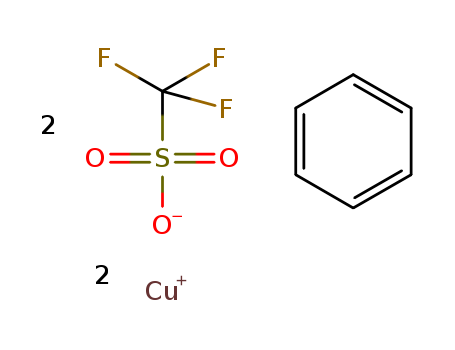10.1016/S0957-4166(97)00496-5
The study investigates the copper-catalyzed asymmetric aziridination of olefins, focusing on the impact of different nitrene precursors on the reaction's enantioselectivity and yield. The researchers compared several nitrene precursors, including [N-(4-nitrobenzenesulfonyl)imino]phenyliodinane (lb), p-tolyl analog (la), and others. They found that using lb instead of la significantly improved both the enantioselectivity and chemical yields, with aziridine derivatives obtained in moderate to excellent yields and enantioselectivity up to 95% ee. The study highlights the importance of the nitrene precursor's electronic properties in optimizing the reaction conditions for various olefins. The copper(I) triflate [CuOTf] and chiral bis-oxazoline were used as the catalytic system, and different olefins were tested to evaluate the efficiency of the nitrene precursors. The results suggest that the choice of nitrene source is crucial for achieving high enantioselectivity and yield in the asymmetric aziridination of olefins.
10.1016/j.tet.2018.04.082
The study presents a simplified method for beta-glycosylation of peptides, focusing on the activation of S-phenyl thioglycosides using N-iodosuccinimide and catalytic copper(I) triflate. This method effectively promotes beta-O-glycosylation at serine and threonine hydroxyls in "mono-," di-, and tripeptides, as well as beta-N-glycosylation of asparagine-containing peptides. A key advantage is the minimization of undesired amide O-glycosylation. The study also develops streamlined deprotection sequences based on global hydrogenolysis, leading to the parent glycopeptides. The core glycopeptide region for biological protein N-glycosylation has been synthesized, purified, and characterized. The research provides an efficient process for O- and N-glycosylation of peptides, which is beneficial for multistep preparations, especially those limited by material availability.



